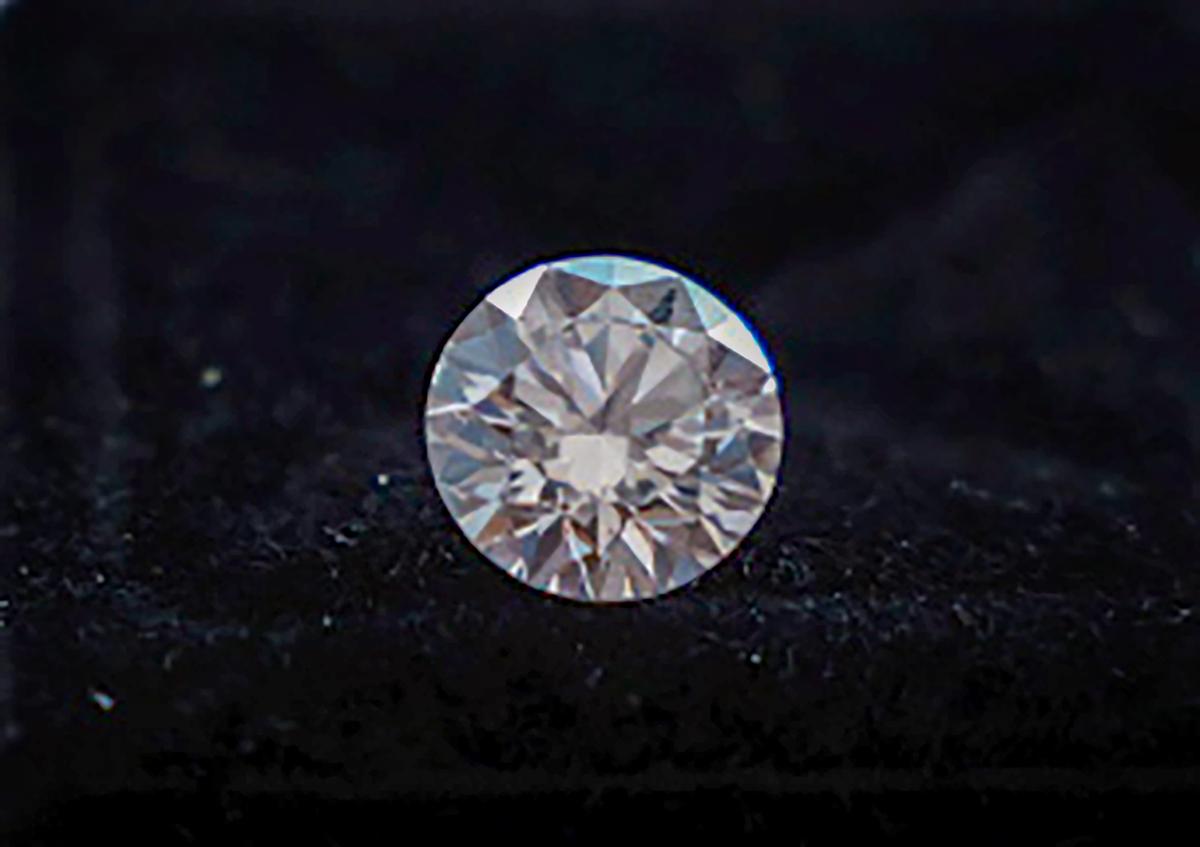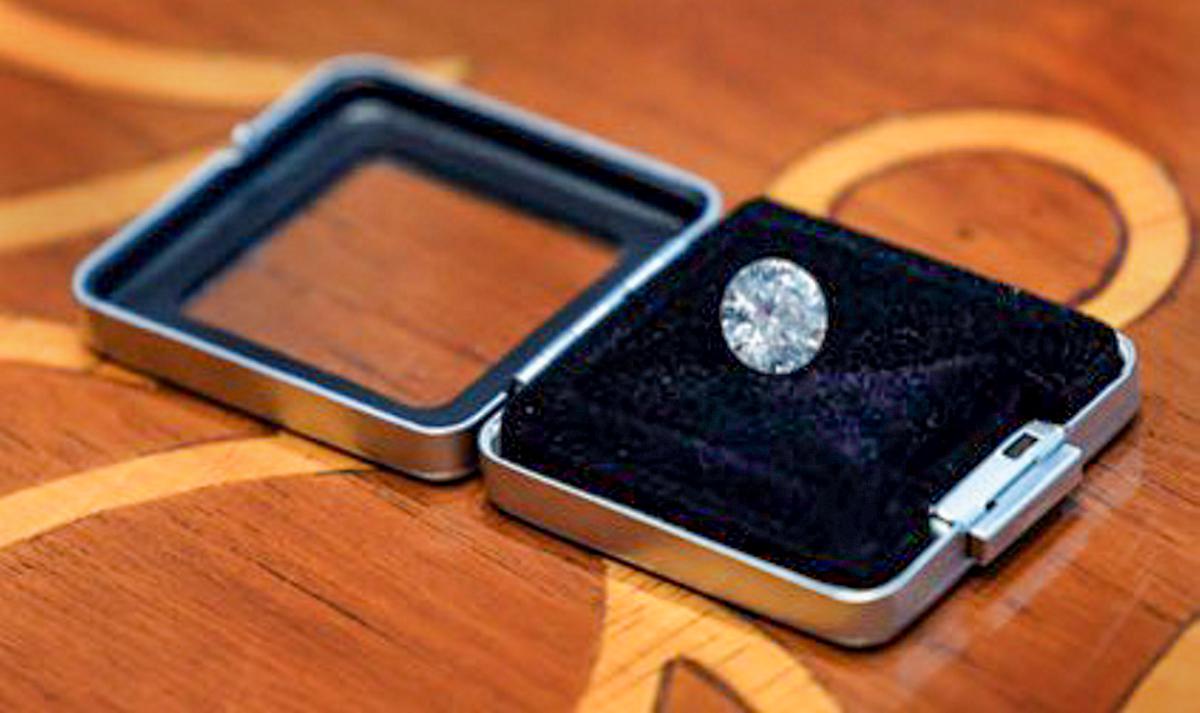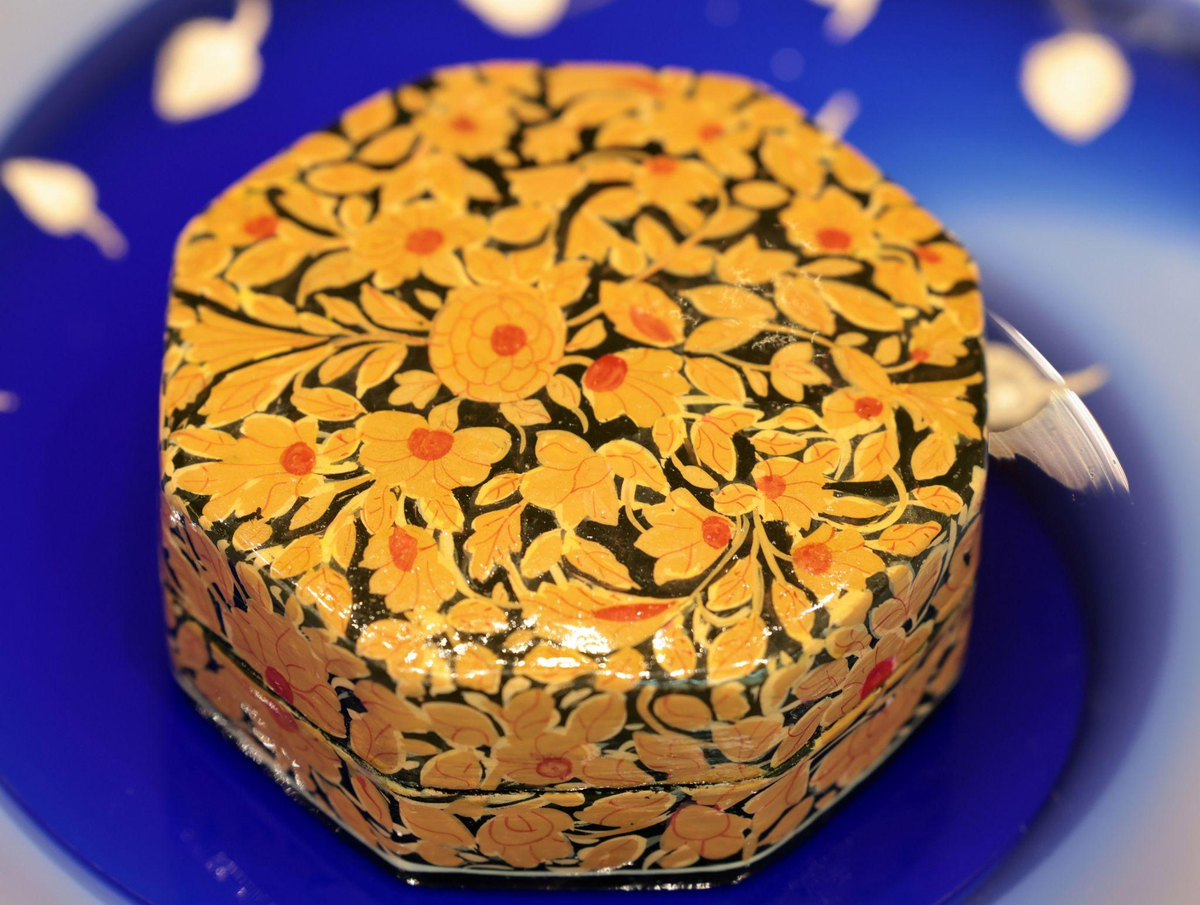Prime Minister Narendra Modi, who is in the United States for a three-day State visit, has gifted an eco-friendly lab-grown 7.5-carat diamond, placed in an exquisite Kashmiri papier-mâché box, to the U.S. First Lady Jill Biden.
x in which the Green Diamond was placed. | Photo Credit: Special Arrangement
Prime Minister Narendra Modi, who is in the United States for a three-day State visit, has gifted an eco-friendly lab-grown 7.5-carat diamond, placed in an exquisite Kashmiri papier-mâché box, to the U.S. First Lady Jill Biden.
Also Read |PM Modi’s U.S. visit Day 2 updates
The diamond is considered eco-friendly as resources like solar and wind power were used in its making. The green diamond is sculpted with precision and care using cutting-edge technology. It emits only 0.028 grams of carbon per carat and is certified by the Gemological Lab, IGI (International Gemological Institute).

A 7.5-carat lab-grown diamond, gifted by Prime Minister Narendra Modi to U.S. First Lady Jill Biden. | Photo Credit: PTI
India is promoting manufacturing of lab-grown diamond (LGD) in the country and for that the government announced steps in the last Union Budget.
The government had announced elimination of customs duty on LGD seeds from 5% earlier. It also approved a five-year research grant to the Indian Institutes of Technology, Madras to encourage the indigenous production of LGD machinery, seeds and recipe.

It has been proposed to establish an India Centre for Lab-grown Diamond (InCent-LGD) at IIT Madras with the estimated cost of ₹242.96 crore over five years.
What are lab-grown diamonds?
Lab-grown diamonds are produced through two technologies — High Pressure High Temperature (HPHT) and Chemical Vapour Deposition (CVD).
India is one of the leading producers of these diamonds using CVD technology.
Also Read |PM Modi’s U.S. visit Day 1 updates
As per industry estimates, India’s share in its global trade in the financial year 2021-22 was 25.8%.
However, India has to depend on other countries for the supply of critical machinery components and seeds — which are the raw materials for producing synthetic diamonds.
The aim of this (InCent-LGD) project is to provide, in mission mode, technical assistance to the industries and entrepreneurs in the country, in promoting indigenous manufacturing of both CVD and HPHT systems along with the recipes for expanding the LGD business at the upstream end.

A 7.5-carat lab-grown diamond, gifted by Prime Minister Narendra Modi to U.S. First Lady Jill Biden. | Photo Credit: Special Arrangement
Besides the jewellery industry, lab-grown diamonds are used in computer chips, satellites, and 5G networks as they can be used in extreme environments due to their potential to operate at higher speeds while using less power than silicon-based chips.

LGD has a vast application in the field of defence, optics, jewellery, thermal and medical industry.
The lab-grown diamond jewellery market is expected to rapidly rise to $5 billion by 2025 and exceed $15 billion by 2035.

A 7.5-carat lab-grown diamond, gifted by Prime Minister Narendra Modi to U.S. First Lady Jill Biden. | Photo Credit: PTI
The exports of cut and polished (worked) lab-grown diamonds stood at $1.4 billion during April-December 2022-23. It was $1.35 billion in 2021-22.
On the other hand, Kashmiri papier-mâché involves meticulous preparation of paper pulp and naqqashi, where skilled artisans paint elaborate designs. It has a GI (Geographical Indication) tag.
GI is primarily a certification accorded to an agricultural, natural or manufactured product (handicrafts and industrial goods) that authenticates its origin from a definite geographical territory.
Typically, such a name conveys an assurance of quality and distinctiveness, which is essentially attributable to the place of its origin.
The process to register GI products includes the filing of an application, preliminary scrutiny and examination, show-cause notice, publication in the geographical indications journal, opposition to registration, and registration.
Any association of persons, producers, organisation or authority established by or under the law can apply. The applicant must represent the interest of the producers.
It is a legal right by which the GI-holder can prohibit others from using the same name.
Once a product gets this tag, no other person or company can sell a similar item under that name. This tag is valid for a period of 10 years, following which it can be renewed.

The exquisite Kashmiri papier-mâché box in which the Green Diamond was placed. | Photo Credit: Special Arrangement
The other benefits of GI registration include legal protection to that item, prevention against unauthorised use by others, and promotion of exports.
Other famous goods which carry this tag include Basmati rice, Darjeeling Tea, Chanderi Fabric, Mysore Silk, Kullu Shawl, Kangra Tea, Thanjavur Paintings, Allahabad Surkha, Farrukhabad Prints, Lucknow Zardozi and Kashmir Walnut Wood Carving.


1 Comment
Isyana Sarasvati
Morbi tellus nisl, accumsan quis bibendum in, vulputate nec arcu. Fusce et purus tellus. Quisque neque mi, sollicitudin in nibh eget, euismod blandit mauris.
Leave a reply